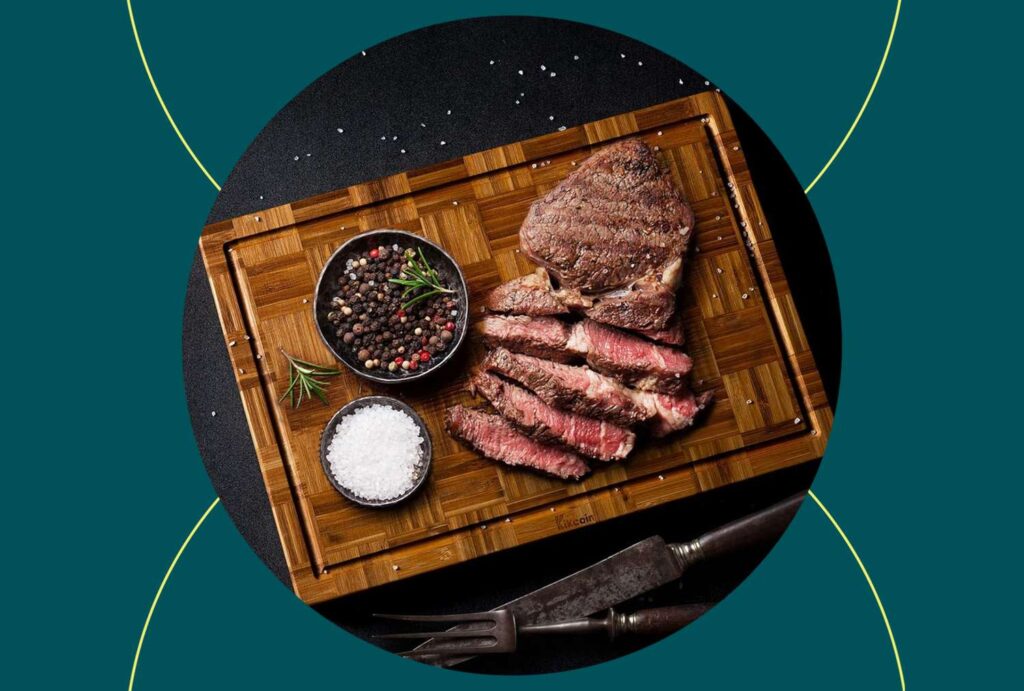When dietitians, food scientists and cardiologists all tell you to ditch plastic cutting boards, it’s worth listening to. I communicated with these experts at separate times, asking what they avoid in the kitchen, and the plastic cutting board has come up repeatedly for its microplastics risk. It makes sense: Studies show that over time, after consistent use, you’re essentially cutting little particles of your plastic board right into your food. Yummy!
Because of all of these building insights, I knew that when I moved three months ago, I would take the opportunity to switch to a non-toxic cutting board alternative, like a wooden one. I purchased this set of bamboo cutting boards because of their relatively low price—just around $18 apiece, compared to some brands that cost over $100 each—and expensive look. I’ve used them every day since. And as soon as dietitian Avery Zenker, RD, MAN at MyHealthTeam, dropped this quote into my lap (from a previous EatingWell article), I felt even better about my choice: “It was also estimated that a person who uses a plastic cutting board is exposed to 7.4 to 50.7 grams of microplastics per year. That’s about one plastic grocery bag on the lower end, and 10 credit cards on the high end.”
Kickoin Bamboo Cutting Board Set, 3-Pack
Amazon
These boards have been excellent so far. After daily use for over two months, they look as good as new. I am a huge fan of the checkered wood-grain pattern. It’s so visually appealing and makes these boards look way more expensive than they are—plus, I can comfortably use them as serving boards when I’m hosting.
Beyond their visual appeal, these cutting boards are utilitarian. I appreciate the variety of sizes in the set: a large 17 x 12 x 1-inch board, a medium 14 x 10 x 1-inch board and a smaller 10 x 7 x 0.8-inch board. I reach for the medium size the most for everyday tasks, like cutting up lettuce for lunch or prepping tofu and vegetables for dinner. The large one is useful for larger meal prep instances, like when I’m making a pie, sauce or soup. I grab the small one most often for snacks, particularly for cutting fruit.
The boards have built-in handles that make them very easy to grab. They’re not overly heavy, but anything large and bulky can be annoying to hold, so these handles are always appreciated. The thicker 1-inch height helps me confidently chop down quickly and seamlessly without feeling like I’m going to break the board or slide it around.
All three boards come with a juice groove for tidy prep work. As a pescatarian, I have no issues using these as my boards for everything, but I do recommend having another non-toxic alternative, such as titanium or glass, to prepare raw meat or fish for contamination purposes. Wood is porous, so it’s harder to ensure it stays clean and bacteria-free in those use cases.
In terms of cleaning, I treat these just like any wooden cutting board. I hand-wash them with soap and dry them right after to keep moisture from building up. About once a month, I treat them with mineral oil rub to keep them durable and protected. One perk is that these come with a nifty cutting board holder, so you can neatly stack them on your counter or on a wide pantry shelf, if you have the space. The only downside I have found for these is that they have a smoky smell when you first unwrap them, but it goes away quickly after consistent use.
I’d recommend these most to frequent home cooks who want a less expensive, useful cutting board set that they can rely on day to day. I’ve even found that I can use both sides of the boards, which will give them double the lifespan in the long run. Join me, and thousands of other shoppers, and ditch the plastic cutting board for this reliable bamboo cutting board bundle.
Shop More of My Favorite Kitchen Gear
GIR Silicone Spatula
Amazon
Bentgo Glass Container Set, 6-Pack
Amazon
Pyrex Colors Glass Mixing Bowl Set, 3-Pack
Amazon
Zri Bamboo Adjustable Spice Rack
Amazon
Shun 8-Inch Classic Chef’s Knife
Amazon
At the time of publishing, the price was $55.

